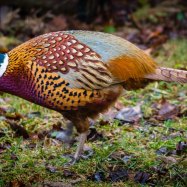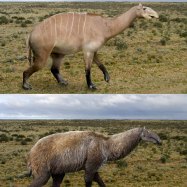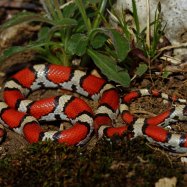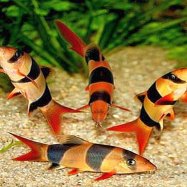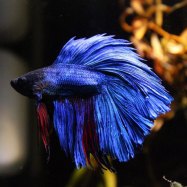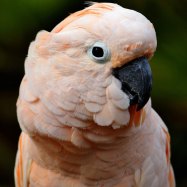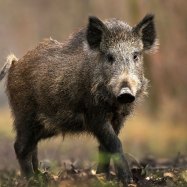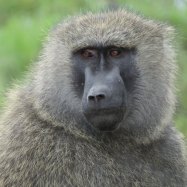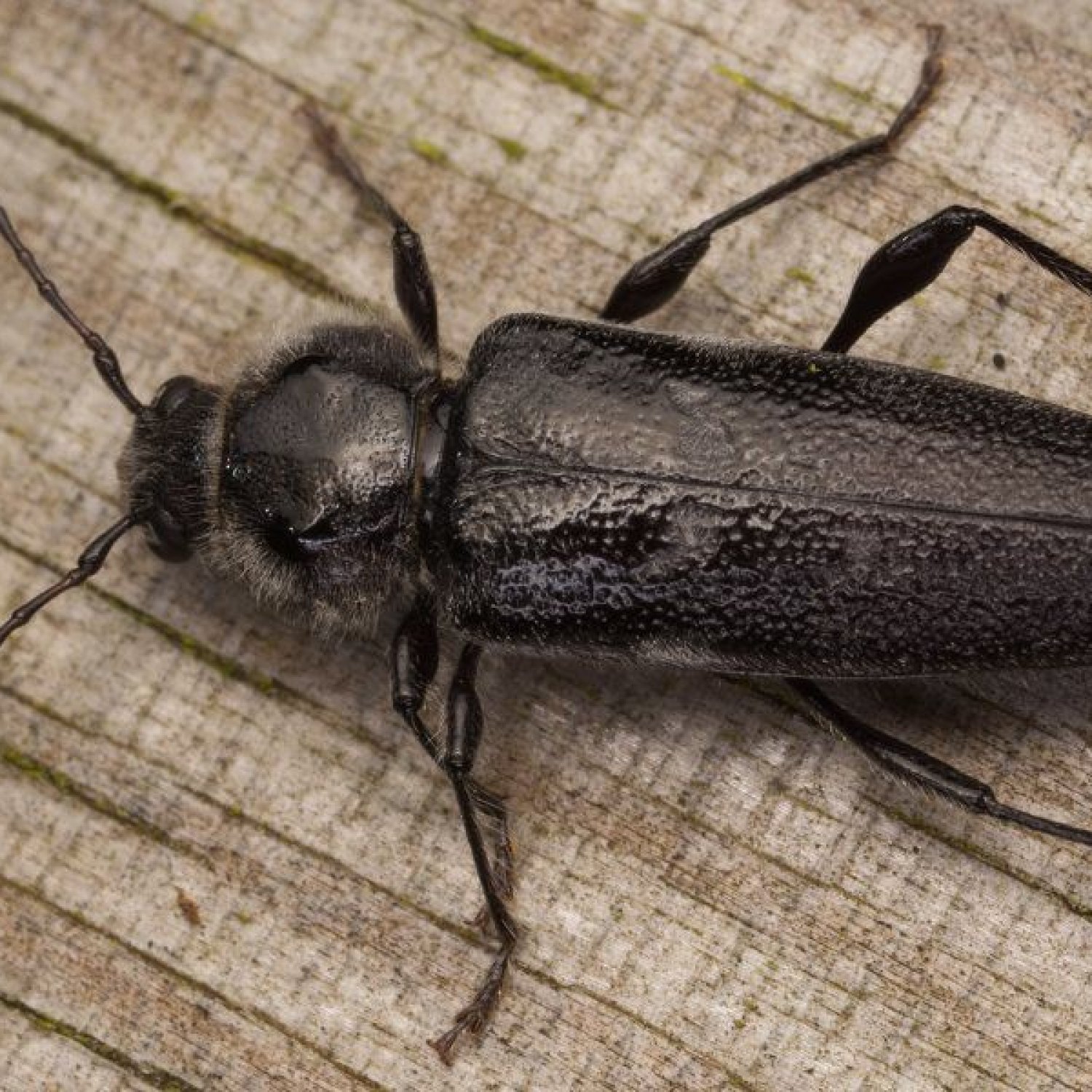
Old House Borer
10-25 millimeters
The Old House Borer, part of the Cerambycidae family, is a common pest found in old buildings and timber structures. Measuring 10-25 millimeters in length, these long and slender insects can cause damage to wood, making them a nuisance for homeowners. Take preventive measures to protect your property from these pesky pests. #OldHouseBorer #PestControl #HomeMaintenance
Animal Details Summary:
Common Name: Old House Borer
Kingdom: Animalia
Habitat: Wooded areas
The Notorious Wood-boring Insect: Hylotrupes bajulus, Commonly Known as Old House Borer
If you have ever stepped foot inside an old house or visited a timber structure, chances are you may have come across the Old House Borer, scientifically known as Hylotrupes bajulus. This small but notorious insect has been causing damage to wooden structures for centuries, making it a well-known pest in Europe and North America.Native to Europe, the Old House Borer has earned its common name due to its preference for infesting old buildings and timber structures. The insect belongs to the Animalia kingdom, Arthropoda phylum, and Insecta class, and is a member of the Coleoptera order and Cerambycidae family Old House Borer. Let's delve deeper into the life of this wood-boring insect and learn about its characteristics and impact on its surroundings.
Habitat and Distribution
As the name suggests, the Old House Borer prefers to live in wooded areas, making them a common sight in forests, parks, and even your backyard. However, they are most notorious for infesting old or untreated timber structures such as barns, sheds, and abandoned buildings. These insects thrive in damp and humid environments, making them a common problem in coastal regions.The Old House Borer is native to Europe and is thought to have been introduced to North America during the colonization period. Today, they can be found in Canada, the United States, and Mexico, with the highest infestation rates reported in the northeastern and western regions.
Physical Characteristics
The Old House Borer is a relatively small insect, with lengths ranging from 10-25 millimeters. However, what they lack in size, they make up for in destruction. These insects have a dark brown to black coloration, making them blend in seamlessly with their preferred habitat of wooden structures Ornate Black Tailed Rattlesnake.Their body shape is long and slender, with six legs and two antennae. They also have hardened outer wings, or elytra, which serve as a protective covering for their delicate wings. This characteristic, along with their dark color, helps them to disguise themselves and avoid detection and predators.
Feeding and Behavior
The Old House Borer is a wood-boring insect, meaning they have a special mouthpart that allows them to chew through wood. They are considered to be quite destructive, as they feed on and tunnel through the wood, creating long tunnels or galleries where they lay their eggs and eventually emerge as adults.They prefer to attack wood with high moisture content and do not usually attack wood that is treated or painted. Their feeding habits can cause significant structural damage to buildings and wooden structures, making them a major concern for homeowners and property owners.
The Impact of Old House Borers
Despite their small size, Old House Borers can cause significant damage to wooden structures. Their feeding can weaken the wood and make it more prone to breakage, posing a safety risk to anyone occupying the structure. Moreover, their presence can significantly decrease the value of the affected property, making it difficult to sell or rent.Due to their destructive nature, homeowners and property managers need to be vigilant for any signs of infestation. If left untreated, the Old House Borer can cause structural damage that can be costly to repair.
Preventative Measures and Treatment Options
Prevention is the best solution when it comes to dealing with Old House Borers. Property owners can take certain measures to make their structures less attractive to these pests. These include:- Using seasoned and treated wood in construction
- Ensuring proper ventilation in wooden structures
- Repainting or sealing any exposed wood
- Regularly inspecting and treating any signs of infestation
However, if an infestation is suspected or confirmed, it is best to seek professional help. A licensed pest control technician can assess the severity of the infestation and recommend the best course of action. Treatment options may include chemical treatments, fumigation, or removal of affected wood.
The Importance of NLP in Identification and Prevention
Natural Language Processing (NLP) is a type of artificial intelligence that is used to analyze and interpret human language. It has been widely utilized in various industries, including pest control, to automate processes and improve efficiency.In the case of Old House Borers, NLP can be used to analyze and identify patterns and keywords in online reviews and social media posts to detect potential infestations. This helps pest control companies to identify and respond to reports of infestations quickly, preventing further damage and protecting properties.
Moreover, NLP can also be used to assist in multi-lingual identification and treatment of pests, making it easier for pest control companies to expand their services and reach a wider audience.
In Conclusion
Despite their small size, the Old House Borer has made a name for itself as a notorious pest in Europe and North America. Their preference for infesting old wooden structures can cause significant damage and decrease the value of affected properties.As a homeowner or property manager, it is essential to understand the characteristics and behavior of this wood-boring insect to prevent and treat infestations. Additionally, advancements in technology, such as Natural Language Processing, can aid in early detection and efficient treatment of these pests. So, keep an eye out for any signs of Old House Borer infestations, and remember, prevention is key in protecting your property from these destructive insects.

Old House Borer
Animal Details Old House Borer - Scientific Name: Hylotrupes bajulus
- Category: Animals O
- Scientific Name: Hylotrupes bajulus
- Common Name: Old House Borer
- Kingdom: Animalia
- Phylum: Arthropoda
- Class: Insecta
- Order: Coleoptera
- Family: Cerambycidae
- Habitat: Wooded areas
- Feeding Method: Wood-boring
- Geographical Distribution: Europe and North America
- Country of Origin: Europe
- Location: Old buildings, timber structures
- Animal Coloration: Dark brown to black
- Body Shape: Long and slender
- Length: 10-25 millimeters
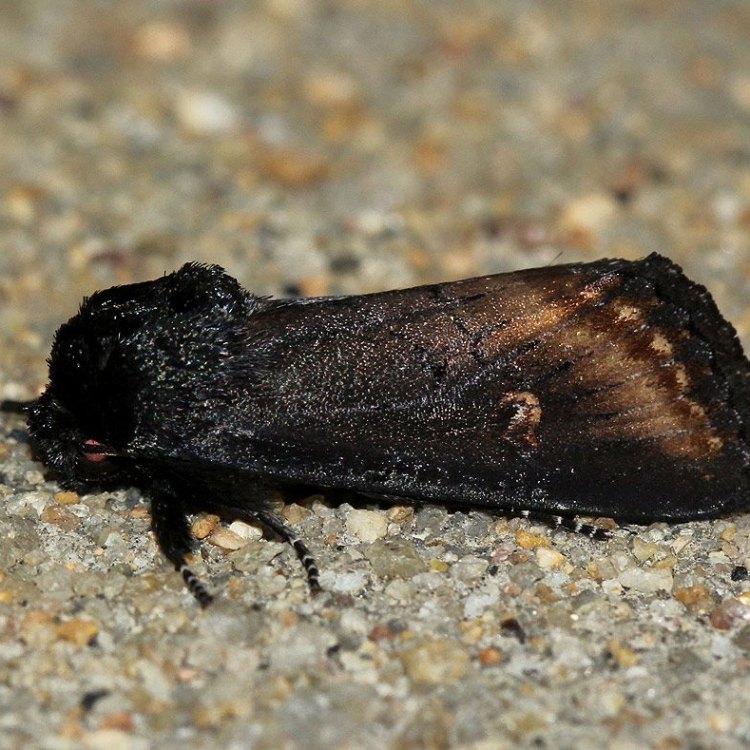
Old House Borer
- Adult Size: 10-25 millimeters
- Average Lifespan: 1-5 years
- Reproduction: Eggs
- Reproductive Behavior: Females lay eggs in wood
- Sound or Call:
- Migration Pattern: Non-migratory
- Social Groups:
- Behavior: Active during warm months
- Threats: Damage to structures and wooden objects
- Conservation Status: Not listed
- Impact on Ecosystem:
- Human Use:
- Distinctive Features: Long antennae, wood-boring larvae
- Interesting Facts: Can cause significant damage to buildings
- Predator: Predatory insects, birds
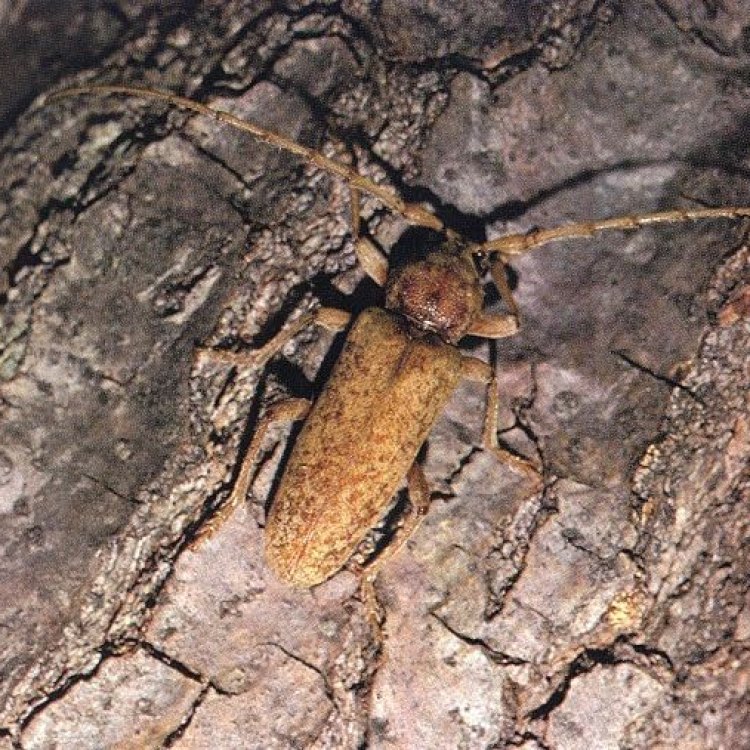
Hylotrupes bajulus
The Intricate World of the Old House Borer: A Hidden Threat to Our Homes and Structures
When you think of wood-boring insects, the Old House Borer might not immediately come to mind. However, this unassuming beetle is actually one of the most damaging pests when it comes to wooden structures and objects. As homeowners, it's important for us to understand the unique features and behaviors of these beetles in order to protect our homes from potential harm.The Basics: Size, Lifespan, and Reproduction
The Old House Borer, also known as Hylotrupes bajulus, is a species of longhorn beetle that is native to Europe but has since spread to other parts of the world, including North America PeaceOfAnimals.Com. As adults, they can reach a size of 10-25 millimeters, making them relatively small insects. However, don't let their size fool you – these tiny beetles can cause significant damage to wooden structures and objects.On average, the Old House Borer has a lifespan of 1-5 years. During this time, their main goal is reproduction. Female beetles lay their eggs in cracks and crevices of unfinished, untreated wood. This is where their distinctive behavior comes into play.
Reproductive Behavior: Females Lay Eggs in Wood
Unlike many other insects, the Old House Borer does not lay their eggs on the surface of wood. Instead, they use their strong mandibles to burrow deep into the wood, laying their eggs in the tunnels they create. This unique behavior allows the eggs to be protected from predators and environmental factors Olympic Marmot.Once the eggs have hatched, the larvae emerge and begin their destructive journey through the wood. They tunnel through the wood, eating and growing as they go.
Distinctive Features: Long Antennae and Wood-Boring Larvae
One of the most unique features of the Old House Borer is their long antennae. These antennae can be up to three times the length of their body and are used for sensing and navigating their surroundings. This is especially useful for finding new, suitable places to lay their eggs.In addition to their long antennae, the larvae of the Old House Borer are also distinctive. They have a cylindrical shape and a creamy-white color, with a dark head and jaws for chewing through wood. These larvae are the main source of damage to wooden structures and objects.
Behavior: Active During Warm Months
As the name suggests, the Old House Borer is commonly found in old houses or structures. These structures provide the perfect environment for the beetles to thrive, with their unfinished, untreated wood providing an abundant food source for their larvae.These beetles are most active during the warm months, usually between late spring and early fall. During this time, the adults will emerge from the wood and begin to mate, continuing the cycle of reproduction and damage to structures.
Threats: Damage to Structures and Wooden Objects
One of the most significant threats of the Old House Borer is the damage it can cause to structures and wooden objects. As the larvae tunnel through the wood, they weaken the structure and can cause significant structural damage if left untreated. This damage can be costly to repair and can also compromise the safety of a building.In addition to structures, the Old House Borer can also damage furniture and other wooden objects. This can be especially devastating for woodworkers or antique collectors who may have their cherished items destroyed by these pests.
Impact on the Ecosystem and Human Use
The impact of the Old House Borer on the ecosystem is not well-studied, but it is believed that they play a role in nutrient cycling by breaking down dead wood. However, their impact on human use is much more tangible and concerning.The damage caused by the Old House Borer can lead to significant financial losses for homeowners and businesses. It also poses a potential safety hazard if the structural integrity of a building is compromised. As such, it is important to be aware of the threat of these beetles and take necessary measures to prevent and control infestations.
Predators and Interesting Facts
As with many insects, the Old House Borer does have some natural predators that can help control their populations. Predatory insects, such as parasitic wasps and beetles, as well as birds, will feed on the larvae and adults.Interestingly, these beetles are also known for their ability to survive long periods without food or water. They can go up to six months without eating, making them resilient and difficult to control.
In Conclusion
The Old House Borer may not be the most well-known of wood-boring insects, but its impact on our homes and structures can be significant. As homeowners, it's important to be aware of their distinctive features, behavior, and threat level in order to protect our valuable possessions and investments.If you suspect an infestation of the Old House Borer, it is best to consult a professional pest control service for effective and safe removal. By taking preventative measures and being vigilant, we can help prevent further damage from these tiny but destructive beetles.

The Notorious Wood-boring Insect: Hylotrupes bajulus, Commonly Known as Old House Borer
Disclaimer: The content provided is for informational purposes only. We cannot guarantee the accuracy of the information on this page 100%. All information provided here may change without prior notice.

